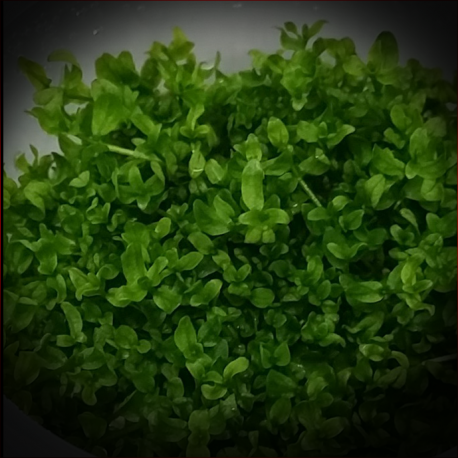More info
Datasheet
| Aquarium Compatible | yes |
| Plant Outdoor | unknown |
| Plant Emersed Growth | yes |
| Plant Growth | fast |
| Temperature Tolerance | 5°C / 41.00°F - 30°C / 86.00°F |
| Temperature | 24°C / 75.20°F - 26°C / 78.80°F |
| Carbonate Hardness | 0-21 kh |
| pH Value | 5-7.5 ph |
| Light | medium-high |
| Carbon Dioxide (CO2) | 10-40mg/lmg/l |
| Nitrate (NO3-) | 10-50mg/lmg/l |
| Phosphate (PO43-) | 0.1-3mg/lmg/l |
| Potassium (K+) | 5-30mg/lmg/l |
| Iron (Fe) | 0.01-0.5mg/lmg/l |
General Description
The Manatee mudflower, scientifically known as Hemianthus glomeratus, is a species of aquatic plant. This plant is often confused with Hemianthus micranthemoides in the aquarium hobby, with the latter being a separate species that is possibly extinct in its natural habitat. The distinctive feature of H. glomeratus is its compact growth habit, forming dense carpets or bushy structures. It is found predominantly in Florida, USA, thriving in wet depressions and stagnant waters.
Aquarium Suitability
Hemianthus glomeratus is suitable for aquariums and is readily available commercially. It is considered an easy plant to care for in aquaria. Its availability from commercial sources and other hobbyists makes it a popular choice for aquatic enthusiasts.
Demands and Hardiness
H. glomeratus is relatively undemanding in terms of care and maintenance when provided with sufficient light, preferably around 0.5 watts per liter or more. Although it can survive without additional CO2 supplementation, it thrives and grows more robustly with CO2 injection. Regular nutrient supplementation with nitrate, phosphate, iron, and micronutrients benefits its growth. Maintaining phosphate levels between 1-2 mg/l may promote better development. The plant is susceptible to certain fish medications containing Erythromycin or Tryptaflavin.
Aquascaping & Usage
In aquascaping, Hemianthus glomeratus can be used in various ways. Under intense lighting, it creates an attractive carpet in the foreground of the aquarium. Routine trimming allows it to be shaped into a bushy midground plant. Its small, delicate leaves also make it a suitable choice for nano tanks and as a decorative element in the background of small aquariums.
Propagation
Propagation of Hemianthus glomeratus is typically done through stem cuttings. These cuttings can be replanted in the substrate to establish new growth. Additionally, the plant spreads by developing roots along its creeping stems, aiding in its propagation within the aquarium environment.
Habitat and Distribution
Originally endemic to Florida, Hemianthus glomeratus thrives in its natural habitats, including wet depressions and stagnant waters. Its adaptability to varying water conditions and habitats makes it a versatile plant for aquarium cultivation.

